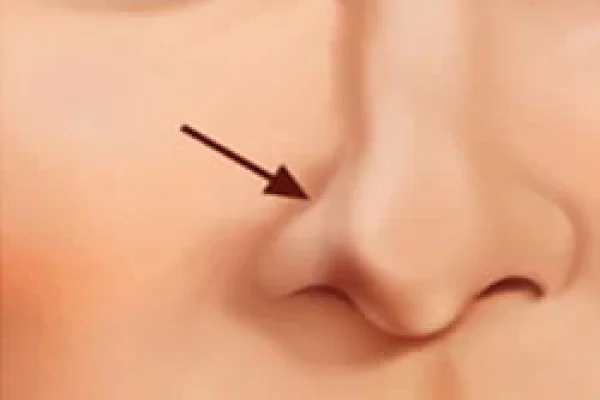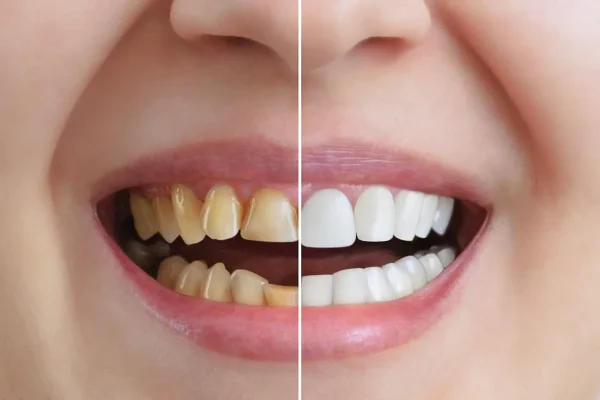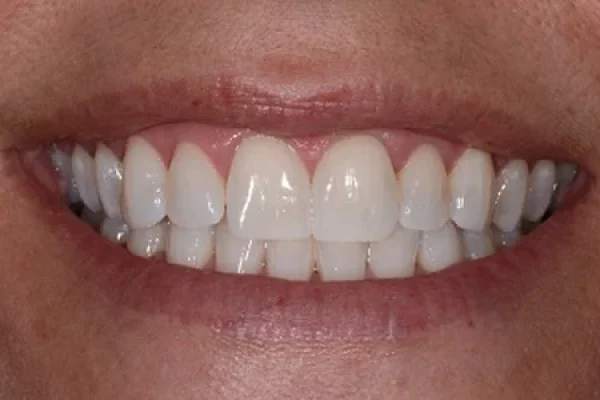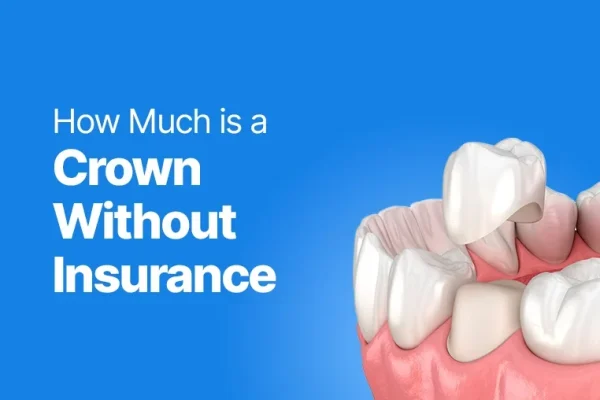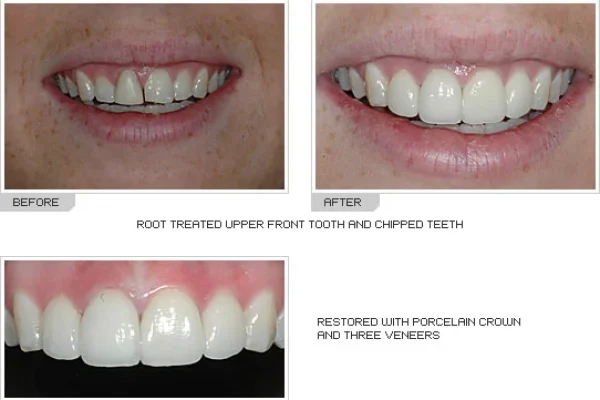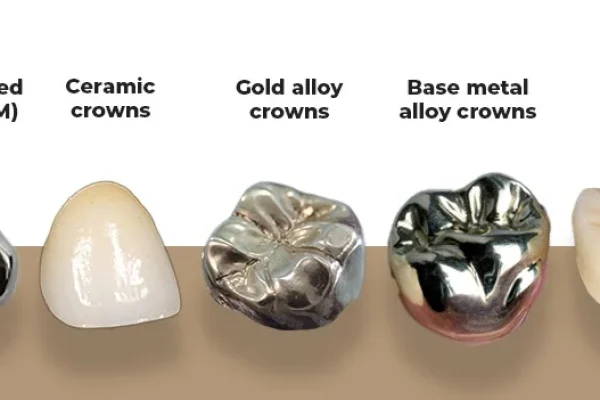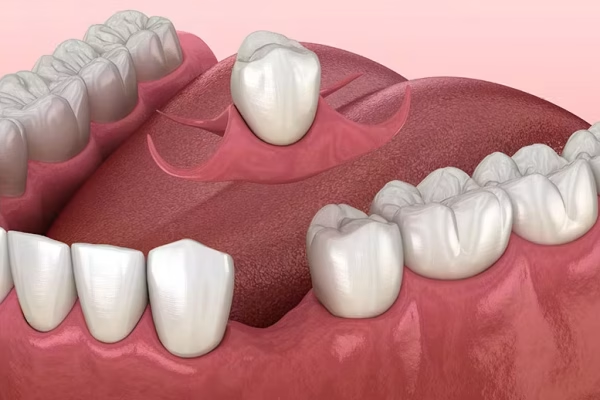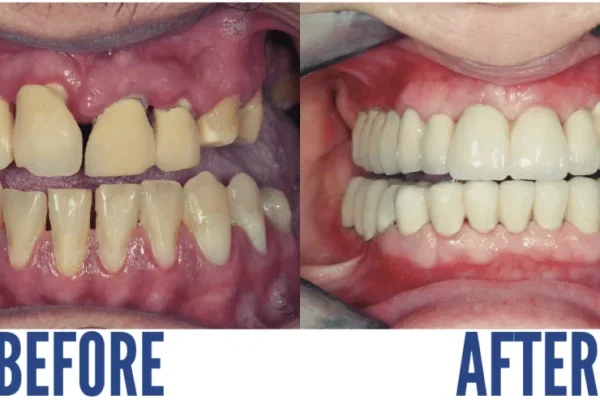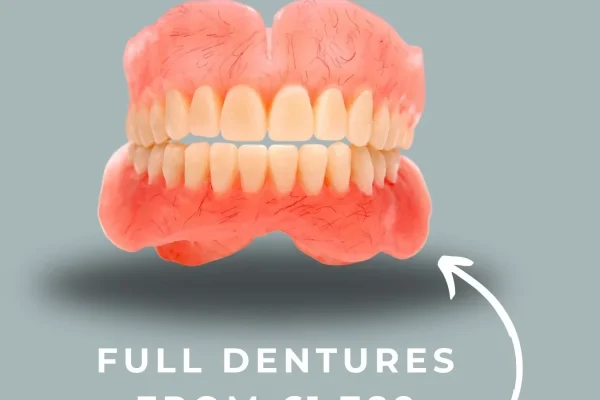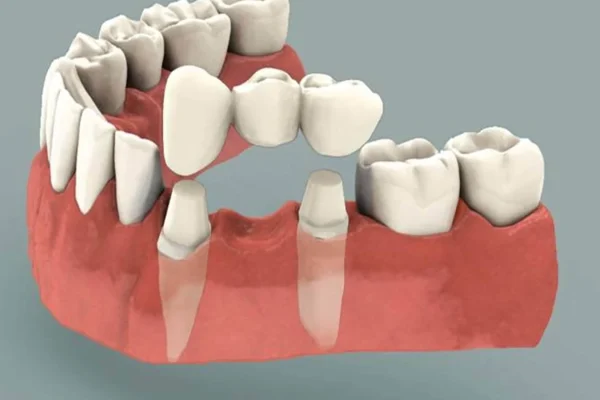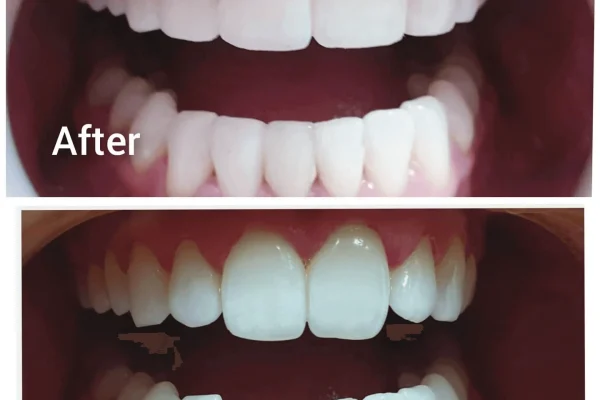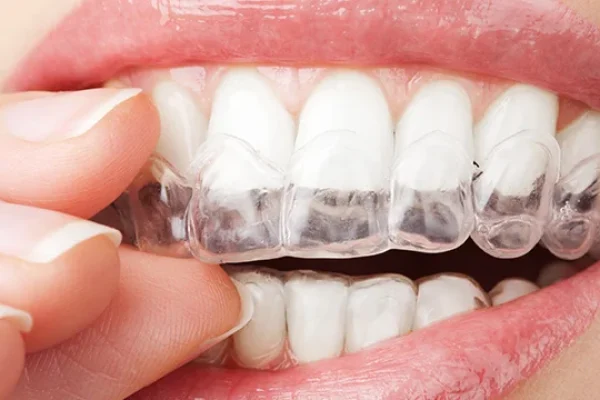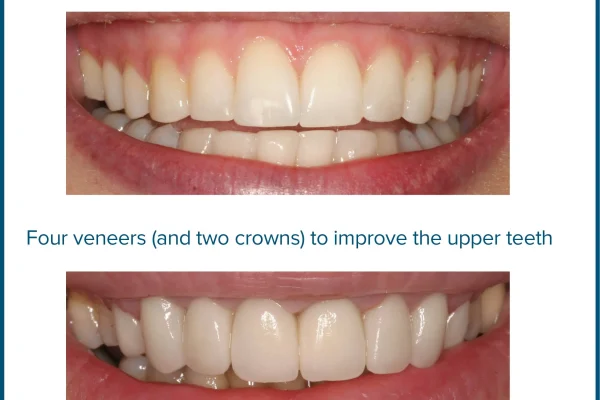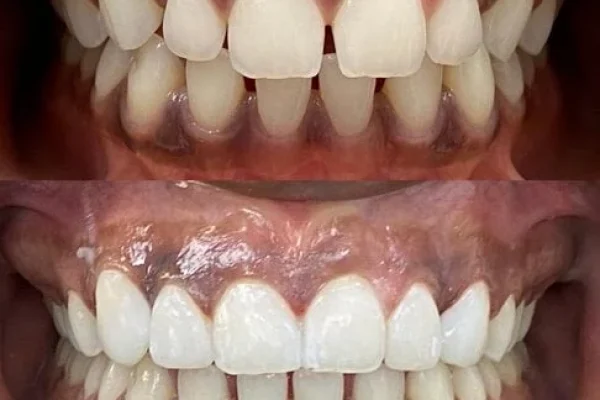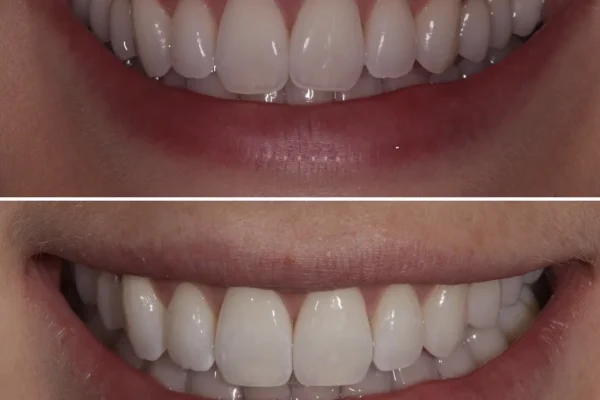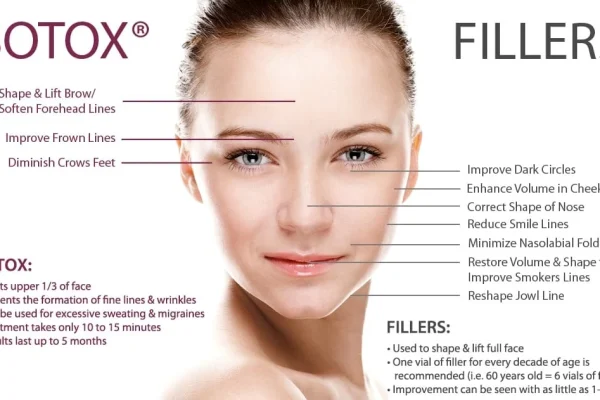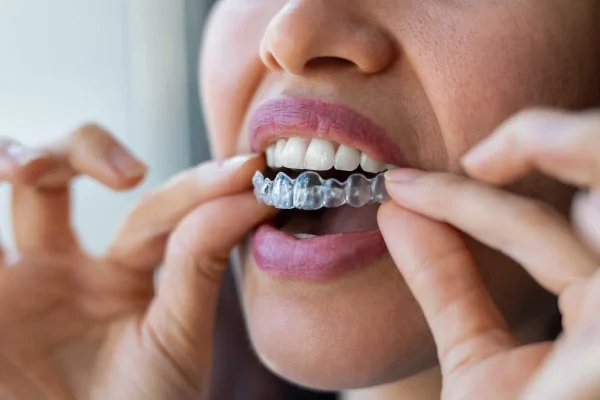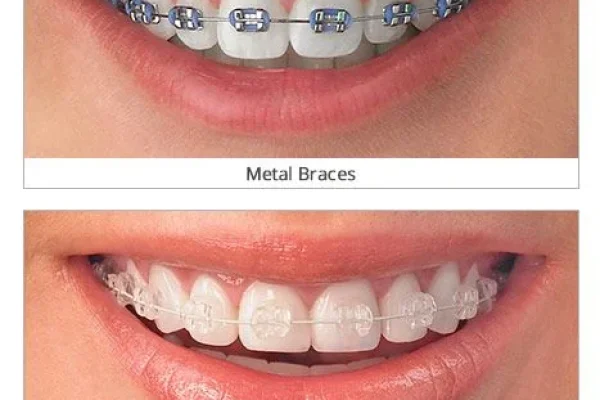
Key Takeaways
-
- Veneer prices vary widely depending on the material chosen (porcelain, composite), the dentist’s expertise, clinic location, the complexity of the case, and the number of veneers.
-
- Porcelain veneers in the UK typically cost between £500 and £1,500 per tooth, being more expensive due to lab fees and material quality.
-
- Composite veneers are a more affordable option in the UK, generally ranging from £250 to £600 per tooth, often completed in a single visit.
-
- The NHS rarely covers veneers as they are usually considered cosmetic; coverage is only for strict clinical necessity, falling under a Band 3 charge (e.g., £319.10 in England, subject to change).
-
- Getting veneers in countries like Turkey can appear significantly cheaper (e.g., £150-£400 per porcelain veneer), but this comes with potential risks regarding aftercare, regulatory standards, and communication.
-
- Many UK dental clinics offer payment plans and finance options (including interest-free credit for shorter terms) to help manage the cost of veneers.
- When comparing veneer prices, it’s crucial to look beyond the initial cost and consider the overall value, including the dentist’s skill, the quality of materials, what’s included in the quote, and potential long-term implications.
Veneers Price: Your Comprehensive Guide to Understanding the Costs
The journey to a revitalised smile with dental veneers is an exciting one, often representing a significant step towards enhanced self-esteem and a more confident projection in both personal and professional spheres. However, floating alongside the dreams of perfectly aligned, pearlescent teeth is the very practical consideration of cost. “Veneers price” isn’t a simple, one-size-fits-all figure; it’s a spectrum influenced by a multitude of factors, akin to pricing a bespoke suit or a piece of custom-designed art. This guide is meticulously crafted to demystify the financial aspects of dental veneers. We aim to peel back the layers of pricing structures, explore the variables that can make costs fluctuate wildly, and provide you with a robust understanding of what you’re investing in. From the fundamental question of typical price ranges to the specific costs associated with different materials like porcelain and composite, and even how the number of veneers or your geographical location within the UK can impact the final bill, we’ll cover it all. Furthermore, we’ll delve into affordability, payment plans, the (limited) role of the NHS, and crucial considerations when looking at options abroad or comparing quotes. Our goal is to empower you with comprehensive, clear, and actionable information, transforming you from a curious inquirer into an informed patient, ready to make decisions that align with both your aesthetic aspirations and your financial framework. Think of this as your financial roadmap to a new smile, navigating every toll booth and scenic overlook along the way.
What is the Typical Veneers Price Range and What Influences It?
When you first type “veneers cost” or “price veneers” into your search engine, you’ll quickly discover that pinning down a single, definitive price is like trying to catch smoke. The cost of dental veneers isn’t a fixed menu item; rather, it exists within a surprisingly broad range, a landscape shaped by numerous, interconnected variables. Understanding these influencing factors is the first crucial step in managing your expectations and planning your investment wisely. Generally, you could be looking at anything from a few hundred to well over a thousand pounds per tooth. This significant variance isn’t arbitrary; it reflects the bespoke nature of the treatment and the quality and expertise involved.
So, what are these pivotal factors that orchestrate the final figure on your quotation? Firstly, the dentist’s experience and reputation play a considerable role. A highly skilled cosmetic dentist, perhaps a specialist with years of intricate smile makeovers under their belt and a portfolio of stunning results, will naturally command higher fees. You’re paying for their artistry, their precision, and the reduced likelihood of complications. Secondly, the geographical location of the clinic is a major determinant. Operating costs, including rent and staff wages, are substantially higher in prime city centre locations, like London’s Harley Street, compared to a suburban practice in a smaller town. This overhead is inevitably factored into the treatment pricing.
The materials used are another cornerstone of cost. Porcelain veneers, prized for their durability and life-like translucency, are almost invariably more expensive than composite resin veneers due to higher raw material costs and the essential involvement of a skilled dental laboratory. The complexity of your individual case also weighs in heavily. Are your teeth relatively straight, requiring minimal preparation? Or is there significant misalignment, discolouration, or pre-existing dental work that needs to be addressed? More complex cases demand more of the dentist’s time, skill, and potentially involve more preparatory steps, all of which impact the “tooth veneer cost”. The number of veneers you opt for will, of course, scale the total investment; however, some clinics may offer a slightly reduced “cost per veneer” if you’re having a larger set done.
Finally, it’s essential to understand what’s typically bundled into that “veneers teeth price” quote. A comprehensive package often includes the initial consultation and smile assessment, digital smile design mock-ups, the tooth preparation appointment, the creation and fitting of temporary veneers (if needed), the laboratory fees for fabricating the final veneers (for porcelain), the crucial fitting and bonding appointment, any necessary adjustments, and usually a follow-up review. Clarifying what’s inclusive and what might be an additional “cost dental veneers” item, such as preliminary hygiene appointments or teeth whitening for adjacent teeth, is vital. Each of these elements contributes to the overall “cost of dental veneers,” making transparency from your chosen clinic absolutely key. Knowing “how much is it for veneers” involves understanding this entire ecosystem of care and craftsmanship.
Are Veneers on Teeth Generally Considered Expensive?
Yes, it’s fair to say that dental veneers are generally perceived as a significant financial undertaking, often positioned at the premium end of cosmetic dental procedures. When patients ask, “Are veneers on teeth expensive?” the straightforward answer leans towards an affirmative, especially when compared to more routine dental treatments like fillings or even teeth whitening. However, the term “expensive” is relative and warrants a deeper exploration in the context of value, longevity, and the transformative impact veneers can offer. It’s less about a simple cost and more about a comprehensive investment in oneself.
To put their cost into perspective, let’s consider other cosmetic dental treatments. Comprehensive orthodontic treatment, such as traditional braces or clear aligners like Invisalign, can often run into several thousands of pounds, a similar ballpark to a set of multiple veneers. Dental implants, a gold standard for replacing missing teeth, typically cost more per unit than a single veneer. Compared to these, the “cost of veneers for teeth” might seem comparable or even more favourable depending on the scope of the work. Conversely, procedures like professional teeth whitening or simple composite bonding for minor chips are considerably less expensive upfront.
However, the real discussion around whether veneers are “expensive” should pivot towards the value they deliver. The aesthetic improvement can be profound. Veneers can correct a multitude of concerns – discolouration, chips, cracks, gaps, minor misalignment, and uneven tooth size – often achieving a dramatic smile makeover that might otherwise require multiple different types of treatment over a longer period. This aesthetic enhancement frequently translates into a significant boost in self-confidence and well-being. Many individuals report feeling less self-conscious, smiling more freely, and even experiencing positive impacts in their social and professional interactions. This psychological and emotional uplift is an intangible but immensely valuable return on investment. Furthermore, high-quality porcelain veneers are remarkably durable, often lasting 10 to 15 years, or even longer with meticulous care. If you amortise the initial “teeth veneer cost” over their lifespan, the annual or even daily “cost” of a beautiful, confident smile becomes a much more palatable figure. It’s an investment in a feature that people notice first, an investment in your daily interactions, and an investment in a long-lasting solution. Therefore, while the initial outlay for “veneers cost” can be substantial, the enduring aesthetic results and the boost to one’s quality of life often justify the price tag for many.
How Much Do Veneers Cost Specifically in the UK?
Navigating the “veneers cost UK” landscape requires an appreciation for regional variations and the factors that make up pricing within the British dental market. While it’s challenging to give exact figures that apply universally, we can certainly provide estimated average cost ranges to give you a clearer picture. For a single porcelain veneer in the UK, you might expect to pay anywhere from £500 to £1,500, and sometimes even more at very high-end clinics or for particularly complex work. Composite veneers, being a less lab-intensive option, typically range from £250 to £600 per tooth. These figures are, of course, per veneer, so the total “veneers price UK” will multiply depending on how many teeth are being treated.
One of the most significant drivers of price variation within the UK is geography. Unsurprisingly, “veneer cost UK” tends to be highest in London and other major metropolitan centres. Clinics in prestigious locations like Harley Street often have higher overheads – rent, rates, and staffing costs – which are naturally reflected in their fees. You might find that practices in smaller towns or cities outside the South East offer more competitive “veneer prices UK.” However, price shouldn’t be the sole determinant; the expertise of the clinician and the quality of materials and service are paramount.
Several factors contribute to these UK-specific price points for “dental veneers cost UK.” The UK has stringent regulatory standards governed by bodies like the General Dental Council (GDC), ensuring high levels of patient safety and clinical governance. Dentists and clinics must invest in compliance, ongoing professional development, and indemnity insurance, all of which are factored into operational costs. Furthermore, if porcelain veneers are being fabricated, UK dental laboratories that produce high-quality, bespoke ceramic work also have their own cost structures based on skilled technicians, advanced technology, and quality materials. Staff wages for dental nurses, hygienists, and administrative teams also contribute to the overall “uk veneers cost.” When you see a quote, it’s encompassing not just the materials, but the skill, the regulatory environment, the supporting team, and the technology involved in delivering your “teeth veneers cost UK.” It’s a comprehensive package designed to provide a safe and effective treatment outcome within a highly regulated healthcare system. Therefore, while searching for “how much are veneers uk,” it’s crucial to remember that these prices reflect a commitment to quality and safety standards prevalent across the nation.
What Factors Influence the Veneer Cost Per Tooth?
The common practice in cosmetic dentistry is to quote the “veneer price per tooth,” and understanding what drives this individual unit cost is key to deciphering your overall treatment estimate. It’s not as simple as a standard charge; several nuanced elements contribute to the final figure for each meticulously crafted facing. The most dominant factor, as touched upon earlier, is the type of veneer material chosen for that specific tooth. Porcelain veneers, celebrated for their superior aesthetics, stain resistance, and longevity, involve intricate lab work by skilled ceramicists. Different types of porcelain, such as Emax (lithium disilicate) known for its strength and beauty, or feldspathic porcelain, famed for its highly natural, layered appearance, can also have slightly different price points due to the complexity of their fabrication and raw material costs. The dentist’s skill in selecting the right type of porcelain to achieve the desired optical properties like translucency and shade matching also contributes to the value.
Conversely, composite resin veneers, especially those applied directly by the dentist in the chair (direct composite bonding), bypass external lab fees. The “veneer cost per tooth” here is more heavily weighted on the dentist’s chair time, their artistic skill in sculpting the resin, and the cost of the composite material itself. Indirect composite veneers, which are made in a lab from composite material, will fall somewhere in between direct composite and porcelain in terms of cost.
Beyond the material, the specific preparation needed for that individual tooth plays a crucial role. A tooth that is well-aligned and only needs a veneer for colour change might require minimal, or in some cases, “no-prep” (though true no-prep is less common and has specific indications). However, if a tooth is significantly discoloured, slightly rotated, or has an old, failing restoration, it might necessitate more detailed preparation by the dentist to ensure the veneer can mask underlying issues and achieve an optimal aesthetic and functional outcome. This additional chair time and clinical complexity can influence the “veneer price per tooth” for that particular unit. The presence of existing dental work, such as old fillings that need to be assessed, removed, or replaced as part of the veneer process, can also add to the complexity and, consequently, the cost for that specific tooth. Each tooth is, in essence, a miniature bespoke project.
How Much Might Veneers for Just One Tooth Be?
Addressing a cosmetic imperfection on a single tooth with a veneer is a common request, often to rectify issues like a chip from an accident, a lone discoloured tooth (perhaps following a root canal treatment), or to close a small, isolated gap. When considering the “veneer cost” for just one tooth, patients sometimes anticipate it will be a straightforward fraction of a larger treatment plan. However, a single veneer can sometimes cost proportionally more, or at least not significantly less on a pro-rata basis, than if you were having multiple veneers placed simultaneously. The typical price range for a single porcelain veneer in the UK, as mentioned, could be anywhere from £500 to £1,500, with composite options being lower.
The reason a single veneer might not represent a simple division of a larger set’s cost lies in several factors. Firstly, there are certain fixed costs associated with the veneer process, regardless of the number of units. The dentist’s time for the initial consultation, detailed smile analysis, taking impressions or digital scans, and the administrative setup for the treatment are largely similar whether it’s for one veneer or several. If it’s a porcelain veneer, the dental laboratory also has minimum charges for initiating a case, designing, and fabricating even a single unit; these aren’t always linearly scalable.
Secondly, and perhaps most critically for a single veneer, is the artistic and technical challenge of shade matching. When a veneer is placed on just one tooth, especially a prominent front tooth, it must blend absolutely seamlessly with the adjacent natural teeth in terms of colour, translucency, surface texture, and characterisation. Achieving this perfect match is a high-skill task for both the dentist (in communicating the shade requirements) and the dental technician (in fabricating the veneer). It often requires meticulous shade taking, possibly custom staining in the lab or even at the chairside, and can involve more iterative steps to ensure an imperceptible result. This heightened level of artistry and attention to detail for a single, highly visible tooth justifiably contributes to its cost. Therefore, while it’s a targeted solution, the investment reflects the precision required to make that one tooth an indistinguishable part of your natural smile.
How Does the Number of Veneers Affect the Overall Price?
The total investment for your smile transformation with veneers is, quite logically, directly influenced by the number of veneers you decide to proceed with. Typically, the overall price is calculated by multiplying the “veneer price per tooth” by the quantity required. However, it’s not always a strictly linear multiplication. Many dental clinics may offer a slight reduction in the per-unit cost if a patient is opting for a larger set of veneers, say six, eight, or even ten. This potential discount reflects efficiencies that can be gained in both chair time and laboratory processes when handling multiple units for the same patient simultaneously. For instance, preparing several teeth in one session, taking a single comprehensive impression for multiple veneers, or the lab fabricating a batch of veneers together can streamline the workflow.
The crucial question then becomes: how many veneers do *you* actually need? This isn’t a number plucked out of thin air; it’s determined by a careful assessment of your existing smile, your specific aesthetic goals, and a detailed discussion with your cosmetic dentist. For some individuals, just addressing one or two teeth with specific issues – like the “cost of veneers for two front teeth” to close a central gap – is sufficient to achieve their desired outcome. For others, a more comprehensive change is sought. A “social smile,” typically involving four to six veneers on the upper front teeth that are most visible when you speak and smile casually, is a popular option. If you’re aiming for a broader, more encompassing “Hollywood smile,” then eight to ten veneers on the upper arch might be recommended, as this covers the teeth visible even in a very wide grin. In some full smile makeovers, veneers may also be considered for lower teeth, further increasing the total number and, consequently, the overall “veneers cost.”
Your dentist will guide you through this decision-making process, often using tools like digital smile design or wax mock-ups to show you how different numbers of veneers could impact your appearance. They will consider the width of your smile, the condition of your teeth, your bite, and your budget. It’s about finding the sweet spot where your aesthetic aspirations are met effectively and efficiently. Understanding that the number of veneers directly correlates with the “how much for veneers” question is straightforward, but appreciating the nuanced discussion about *why* a certain number is recommended is key to a satisfactory outcome.
What is the Estimated Cost for Two Front Teeth Veneers?
Treating the two front teeth – the central incisors – with veneers is a very common request, and for good reason. These two teeth are the focal point of your smile, and any imperfections here, such as chips, discolouration, a noticeable gap (diastema), or slight rotations, can significantly impact your overall facial aesthetics. The “cost of veneers for two front teeth” or “cost of two front teeth veneers” will primarily depend on the material chosen – porcelain or composite – and the factors previously discussed, such as the dentist’s expertise and clinic location.
If you opt for porcelain veneers for your two front teeth, and assuming a UK average price of, say, £700 – £1200 per veneer, you would be looking at a total estimate of approximately £1,400 to £2,400. For composite veneers, with an average of £300 – £500 per tooth, the cost for two would likely range from £600 to £1,000. These are, naturally, ballpark figures and a personalised quote following a consultation is essential.
The aesthetic considerations for these two teeth are paramount. They must be perfectly symmetrical (or at least appear so), have natural-looking translucency at the incisal edges, and complement the shape and size of your adjacent teeth and overall facial features. The dentist and dental technician will pay meticulous attention to achieving a harmonious and seamless integration. Sometimes, treating just these two teeth can create a dramatic improvement, especially if the adjacent lateral incisors are in good condition and of a pleasing shade. However, your dentist will also discuss whether treating only the two centrals might, in some cases, highlight discrepancies with neighbouring teeth, potentially suggesting a wider treatment plan for a more blended result. The investment in “two front teeth veneers” is often seen as highly impactful due to their prominent position, making even this targeted treatment a significant aesthetic upgrade.
How Much Are 8 Veneers Likely to Cost in the UK?
When patients inquire, “how much are 8 veneers UK?” they are typically envisioning a significant smile makeover, usually covering the upper front teeth that are most prominent when smiling broadly – often from first premolar to first premolar, or canine to canine plus the two teeth behind them. This number of veneers can create a truly transformative effect, addressing widespread discolouration, multiple worn or chipped teeth, or creating a more uniform and aesthetically pleasing arch.
To estimate the cost for eight veneers in the UK, you would multiply the per-veneer cost by eight. Using our earlier UK average ranges:
-
- For porcelain veneers: If a single veneer costs between £500 and £1,500, then eight veneers could range from £4,000 to £12,000. Some clinics might offer a slight package reduction for this number, potentially bringing the higher end down a bit.
- For composite veneers: If a single veneer costs between £250 and £600, then eight composite veneers would likely range from £2,000 to £4,800.
This scale of treatment generally achieves a comprehensive aesthetic overhaul of the “smile zone.” It allows the dentist to redesign the colour, shape, length, and alignment of a significant portion of your visible teeth, leading to a very noticeable and often life-changing improvement in appearance. The treatment timeline for eight porcelain veneers would involve at least two main appointments after the initial consultation: one for tooth preparation and impressions, and another for fitting the final veneers, with a period of a few weeks in between for laboratory fabrication. For direct composite veneers, it might be possible to complete the treatment in a single, albeit lengthy, appointment, or perhaps over two sessions depending on the complexity. An investment of this level for “8 veneers UK” reflects a commitment to a major aesthetic enhancement, promising a dazzling and confident new smile.
What is the Average Cost for a Full Set of Veneers or a Full Arch?
When discussing the “average cost for a full set of veneers” or a “full arch,” it’s important to first define what these terms typically mean in a dental context. A “full set” often refers to veneering all the teeth that are prominent in a wide smile. For the upper arch, this commonly means 8 to 10 veneers (from first premolar to first premolar, or even second premolar to second premolar on each side). If both upper and lower arches are being treated for a complete smile transformation, a “full set” could involve anywhere from 16 to 20 veneers (8-10 on the upper jaw and a similar number on the lower jaw). A “full arch” specifically refers to treating most or all of the visible teeth on either the upper *or* the lower jaw.
Given these numbers, the “full veneers cost uk” or “full set of veneers cost uk” can represent a substantial investment. Let’s extrapolate from our previous UK estimates:
-
- For an upper arch of 10 porcelain veneers: This could range from approximately £5,000 (10 x £500) to £15,000 (10 x £1,500).
-
- For a full mouth set of 20 porcelain veneers (10 upper, 10 lower): This could range from £10,000 to £30,000, or even more depending on the clinic and complexity.
- For composite veneers, the costs would be considerably lower. An upper arch of 10 composite veneers might range from £2,500 to £6,000. A full mouth set of 20 composite veneers could be in the region of £5,000 to £12,000.
A “full set” is usually considered when there are widespread aesthetic concerns, such as significant, generalised discolouration that doesn’t respond to whitening, multiple worn, chipped, or misshapen teeth across the arch, or a desire for a complete “smile reset” to achieve a specific, highly uniform aesthetic. The planning for such extensive treatment is meticulous, involving detailed smile design, consideration of bite (occlusion), and ensuring the final result is not only beautiful but also functional and comfortable. Patients opting for a full set are typically looking for the most dramatic and comprehensive improvement possible, and the “full set of veneers cost uk” reflects the sheer scale, artistry, and clinical time involved in such a transformation.
What Does a Full Set of Veneers Cost in the UK Typically?
Reiterating the cost for a “full set of veneers cost in the UK typically,” we are looking at a significant investment that reflects the comprehensive nature of the treatment. As defined, a “full set” for the upper arch usually means 8 to 10 veneers. If we focus on porcelain veneers, which are most commonly chosen for such extensive makeovers due to their durability and aesthetics, the price in the UK would generally fall within the £4,000 to £15,000 spectrum for 8 to 10 upper veneers. If “full set” implies both upper and lower arches (perhaps 16 to 20 veneers in total), then the cost could easily range from £8,000 to £30,000.
For such substantial treatments, dental clinics are often more likely to discuss package deals or comprehensive financing options. A “package” for a full set of veneers might be more than just a slight volume discount on the per-veneer price; it could also bundle in other valuable components. For instance, a typical full set package might explicitly include:
-
- Initial comprehensive consultation and aesthetic assessment.
-
- Digital Smile Design (DSD): Allowing you to preview your new smile.
-
- Diagnostic wax-up models: Physical models showing the proposed outcome.
-
- Professional teeth whitening: For any adjacent natural teeth not being veneered, to ensure a harmonious overall shade.
-
- Custom-made temporary veneers: To protect prepared teeth and give you a trial run of your new smile’s shape.
-
- All laboratory fees for the fabrication of the final porcelain veneers.
-
- All fitting appointments and necessary adjustments.
-
- Follow-up review appointments.
-
- Sometimes, a nightguard to protect your new veneers, especially if you clench or grind your teeth.
- A warranty or guarantee on the veneers for a specified period, subject to terms and conditions (like regular check-ups).
The value in such a package for a “full set veneers cost uk” lies in its all-inclusive nature, providing clarity on the total investment and often incorporating elements that enhance the longevity and success of the treatment. Different clinics might offer various tiers for full set packages, perhaps distinguishing between standard high-quality porcelain and premium, master-ceramist hand-layered porcelain, which could affect the final price. It’s crucial to get a detailed breakdown of what any “full set” quote includes to make an informed comparison and decision.
How Do Different Types of Veneers Impact the Price?
The choice of material for your veneers is one of the most significant factors dictating the final “veneers price.” There are several types of veneers available, each with its own unique characteristics, manufacturing process, and, consequently, cost implications. Understanding these differences is key to appreciating why one type might be considerably more of an investment than another. The main contenders in the veneer world are Porcelain Veneers, Composite Resin Veneers, and branded options like Lumineers (which are a type of no-prep or minimal-prep porcelain veneer).
Porcelain veneers are widely regarded as the gold standard for aesthetic and durable smile makeovers. These are thin, custom-made shells of dental ceramic meticulously crafted by a dental technician in a laboratory. The process is multi-stage: the dentist prepares your teeth, takes an impression or digital scan, and this information is sent to the lab. The ceramist then skilfully builds the veneers to precise specifications of shade, shape, and translucency. This lab involvement is a key reason for their higher cost. There are various types of porcelain used, such as:
-
- Feldspathic porcelain: The traditional choice, known for its beautiful, natural-looking aesthetics due to its ability to be layered, mimicking the natural depth of tooth enamel. It can be more delicate to handle and fabricate.
- Pressed ceramic (e.g., IPS Emax – lithium disilicate): Extremely popular due to its excellent strength, durability, and very lifelike appearance. It can be milled (CAD/CAM) or pressed, offering versatility.
The artistry, time, and high-quality materials involved in lab-fabricated porcelain veneers contribute to them being the most expensive option, but they offer superb longevity (10-15+ years) and excellent resistance to staining.
Composite resin veneers (often called composite bonding when applied directly) offer a more budget-friendly alternative. These are made from a tooth-coloured resin material, similar to that used for white fillings.
-
- Direct Composite Veneers: The dentist applies the resin directly to your tooth surface in layers, sculpting and shaping it in the surgery, then hardening it with a special curing light. This is typically a single-visit procedure, and because it bypasses external laboratory fees and uses less expensive raw material, it’s significantly cheaper than porcelain.
- Indirect Composite Veneers: These are less common but involve the composite veneer being fabricated in a dental lab (similar to porcelain) and then bonded to the tooth. This adds a lab fee, making them more expensive than direct composites but still usually cheaper than porcelain.
Composite veneers are less durable than porcelain (lasting around 5-7 years), more prone to staining and chipping over time, but have the advantage of being repairable and generally requiring less tooth reduction.
Lumineers or other “no-prep”/”minimal-prep” veneers are a specific category, typically made from a very thin but strong type of porcelain (like Cerinate, in the case of Lumineers, which is a brand name by DenMat). Their main selling point is the minimal or sometimes no removal of natural tooth enamel required for their placement. The cost of Lumineers can be comparable to traditional porcelain veneers, sometimes slightly less due to potentially reduced dentist preparation time, but the specific laboratory process and branding can also command a premium. The suitability of no-prep veneers is case-dependent.
Each type offers a different balance of aesthetics, durability, invasiveness, and, crucially, cost. Your dentist will discuss which option is most appropriate for your clinical needs, aesthetic goals, and budget.
What is the Price Range for Porcelain Veneers?
Porcelain veneers stand as the premium choice for those seeking the ultimate in dental aesthetics and longevity, and their “price of porcelain veneers” reflects this superior quality and intricate fabrication process. In the UK, the “cost of porcelain veneers” typically ranges from £500 to £1,500 per tooth. Some elite cosmetic dentists or those using highly specialised master ceramicists for exceptionally bespoke work might even quote prices exceeding this range, particularly for complex cases or in prime city locations. The “porcelain veneers price uk” can therefore vary quite substantially.
Several key elements contribute to why “porcelain veneers cost” what they do:
-
- Laboratory Fees: This is a significant component. Crafting porcelain veneers is an art form undertaken by highly skilled dental technicians (ceramicists) in a dental laboratory. They meticulously layer or press the ceramic material to create veneers that not inly fit perfectly but also mimic the natural translucency, colour gradations, and surface texture of real teeth. The time, skill, and specialised equipment involved in this bespoke fabrication process are substantial.
-
- Material Quality: High-grade dental ceramics, like lithium disilicate (e.g., Emax) or feldspathic porcelain, are sophisticated materials engineered for strength, biocompatibility, and optical beauty. These raw materials are more expensive than composite resins.
-
- Multiple Appointments & Dentist’s Time: The porcelain veneer process typically requires at least two main clinical appointments, often more. The first involves consultation, smile design, meticulous tooth preparation (if needed), taking precise impressions or digital scans, and fitting temporary veneers. The second is for removing the temporaries and carefully bonding the final custom-made veneers. The dentist’s expertise in planning, tooth preparation (which must be highly accurate), and the delicate bonding procedure is paramount. Each of these steps requires significant chair time and clinical skill.
- Durability and Aesthetics: You are investing in a solution renowned for its longevity (often 10-15 years or more with good care) and its superior ability to resist staining and maintain its lustre over time. The natural, life-like appearance achieved with well-made porcelain veneers is unparalleled, and this exceptional aesthetic outcome is a key driver of their value and “porcelain veneer cost.”
While the upfront investment is higher, many patients and dentists consider the long-term value, reduced need for replacements (compared to composite), and outstanding aesthetic results of porcelain veneers to be a worthwhile expenditure for a truly transformative and lasting smile.
What is the Expected Cost of Composite Veneers?
Composite veneers, often referred to as composite bonding or dental bonding when applied directly in the surgery, present a more accessible and “budget-friendly smile enhancement” compared to their porcelain counterparts. The “composite veneers cost” in the UK generally ranges from £250 to £600 per tooth. This makes them a significantly more affordable option, particularly if multiple teeth require treatment. The primary reason for this lower price point is the streamlined process and reduced overheads associated with their application, especially for direct composites.
Here’s why composite veneers typically have a lower expected cost:
-
- Chairside Application (Direct Composites): For direct composite veneers, the most common type, the dentist applies the tooth-coloured resin material directly onto your teeth, layer by layer. They skilfully sculpt, shape, and contour the material in situ, then harden it using a special curing light. This entire process is usually completed in a single dental visit (though it can be a lengthy appointment if multiple teeth are being treated).
-
- No External Laboratory Fees (Direct Composites): Because the dentist performs the artistry chairside, there’s no need to send impressions to an external dental laboratory to fabricate the veneers. This eliminates the lab fee, which is a substantial portion of the cost of porcelain veneers.
-
- Less Expensive Raw Material: While high-quality composite resins are sophisticated dental materials, their raw cost is generally lower than that of dental ceramics used for porcelain veneers.
- Reduced Chair Time (Overall Process): Although a single appointment for multiple direct composite veneers can be long, the overall treatment journey often involves fewer appointments compared to the multi-stage porcelain veneer process (which includes temporaries and lab fabrication time).
Despite their lower “composite veneer costs,” these restorations offer several advantages. They typically require minimal, if any, tooth preparation (enamel removal), making them a more conservative option. They can also be easily repaired if they chip, and the process is often reversible to a greater extent than porcelain veneers. However, it’s important to weigh these benefits against their drawbacks in relation to price: composite veneers are less durable than porcelain (typically lasting 5-7 years), are more susceptible to staining over time, and may require more frequent polishing or touch-ups to maintain their appearance. For many, though, the balance of immediate aesthetic improvement, conservation of tooth structure, and more manageable “composite veneers cost” makes them an excellent and popular choice.
How Much Do Lumineers Cost Compared to Other Types?
Lumineers, a specific brand of “no-prep” or “minimal-prep” veneers, often pique interest due to their marketing emphasis on tooth preservation. When considering “how much do Lumineers cost?” it’s important to understand that their pricing can be somewhat nuanced. Generally, the cost of Lumineers can be comparable to traditional porcelain veneers, and sometimes slightly less or even slightly more, depending on the dental practice and the specifics of the case. You might find Lumineers priced anywhere from £600 to £1,200 per tooth in the UK, placing them in a similar bracket to conventional, high-quality porcelain veneers rather than the more affordable composite options.
Several factors contribute to the pricing structure of Lumineers:
-
- Branding and Proprietary Material: Lumineers are a registered trademark of DenMat Holdings, LLC, and are fabricated from a patented cerinate porcelain, which is exceptionally thin (reportedly as thin as a contact lens) yet strong. This branding and proprietary material can contribute to their cost.
-
- Specific Laboratory Process: Lumineers are exclusively fabricated in DenMat’s own laboratories. This centralised, specialised manufacturing process has its own associated costs, which are passed on to the dentist and ultimately the patient.
-
- Reduced Tooth Preparation (Potentially): The primary unique selling point of Lumineers is that they often require minimal to no grinding down of the natural tooth structure. This can translate to less chair time for the dentist during the preparation phase, which *could* theoretically reduce the cost slightly compared to traditional veneers requiring more extensive prep. However, this isn’t always a significant cost-saving factor in the overall price.
- Dentist Certification: Dentists offering Lumineers typically undergo specific training and certification from DenMat, which can be an investment for the clinician.
It’s crucial to clarify a common misconception: while marketed as “no-prep,” some degree of tooth contouring or minimal preparation might still be necessary for optimal aesthetic results and to ensure the Lumineers don’t appear bulky. The suitability for true “no-prep” application is highly case-dependent and should be assessed by a certified Lumineers dentist.
Compared to other types, Lumineers generally sit at the higher end of the veneer cost spectrum, aligning more with traditional porcelain veneers than with composite veneers. Their appeal lies in the tooth-conserving approach, but patients should weigh this against factors like aesthetic outcomes (ultra-thin veneers can sometimes have limitations in masking very dark discolouration) and ensure they are a good candidate for this specific type of veneer. The “Lumineers cost” reflects their specialised nature, brand recognition, and the promise of a less invasive path to a new smile.
Are There Affordable Veneer Options or Payment Plans Available?
The perception of veneers as a high-cost cosmetic treatment often leads to the crucial question: are there more “affordable veneer options” or ways to manage the expense, such as “dental veneers on finance”? The good news is that many dental practices are acutely aware of the financial considerations patients face and offer various solutions to make achieving a dream smile more accessible. While “cheap veneers” might be a tempting search term, the focus should always be on value and safety, but there are certainly legitimate ways to navigate the “veneer costs.”
One of the primary ways patients manage the investment is through dental payment plans or finance options. Many UK clinics partner with third-party finance companies (like Tabeo, Chrysalis Finance, or V12 Retail Finance) that specialise in funding dental treatments. These plans allow you to spread the total “veneers price” over a series of manageable monthly instalments, often ranging from 6 months to 5 years or even longer. Some clinics may offer interest-free credit for shorter repayment periods (e.g., 6-12 months), while longer terms usually attract interest. A credit check is typically required, and a deposit may or may not be necessary. These “pay monthly options” can make a significant difference, transforming a daunting lump sum into a more digestible regular outgoing.
Regarding dental insurance contributions, it’s important to set realistic expectations. In the UK, purely cosmetic dental treatments, which veneers usually are, are very rarely covered by standard dental insurance policies. Insurance typically focuses on routine and medically necessary dental care. However, there might be exceptionally rare circumstances where a portion could be covered if the veneers serve a significant restorative purpose (e.g., following major trauma and deemed the most clinically appropriate solution), but this is not the norm. Always check the specifics of your policy, but don’t bank on insurance covering cosmetic veneers.
Some clinics might also have in-house membership plans that offer discounts on certain treatments, or they may run seasonal offers or package deals, especially for larger treatment plans like a full set of veneers. It’s always worth asking about these possibilities. The key is to have an open conversation with your chosen dental clinic about your budget. Reputable practices are usually happy to discuss all available financial pathways to help you achieve your smile goals without undue stress, ensuring that “affordable dental veneers” can be a reality through sensible financial planning rather than compromising on the quality of care.
What is the Cheapest Way to Get Veneers?
When patients ask, “What is the cheapest way to get veneers?” it’s essential to approach the answer with a balance of providing cost-effective solutions while strongly cautioning against compromising on quality, safety, or the expertise of the dental professional. Sacrificing these for a lower price can lead to unsatisfactory results, complications, and ultimately, much higher costs in the long run to rectify problems. However, there are legitimate avenues to explore for more budget-conscious veneer treatment:
-
- Composite Veneers (Direct Bonding): As extensively discussed, direct composite veneers are typically the most affordable type of veneer. Applied and sculpted by the dentist in a single visit, they bypass lab fees and use less expensive materials than porcelain. This often makes them the leading “cheapest way” to achieve a veneer-like aesthetic improvement.
-
- Fewer Veneers: Instead of a full smile makeover, consider treating only the teeth that are most problematic or most visible. Sometimes, addressing just two to four key teeth can make a significant aesthetic difference at a fraction of the cost of a full set. A thorough consultation can help identify the minimum number of veneers needed to meet your primary goals.
-
- Treatment at Dental Schools or Hospitals: In the UK, some university dental hospitals or schools offer treatment by dental students under the close supervision of experienced qualified dentists and specialists. The costs at these institutions are significantly lower, often just covering materials, because you are contributing to the students’ learning experience. The trade-offs can include longer appointment times, potentially a waiting list, and treatment by less experienced (though rigorously supervised) hands. However, the standards of care are high, and this can be a very viable option for those on a tight budget.
-
- Phased Treatment Plan: If your budget doesn’t allow for all desired veneers at once, discuss with your dentist whether your treatment can be phased. Perhaps you start with the most critical teeth and plan for others at a later date as finances allow. This approach requires careful planning to ensure a cohesive result over time.
- Geographical Considerations (within the UK): As mentioned, clinics outside major city centres or in regions with lower overheads may offer more competitive pricing for the same quality of treatment. Researching reputable clinics in different areas, if travel is feasible for you, could yield some cost savings.
Crucially, the emphasis must always be on balancing cost with quality and safety. Avoid deals that seem “too good to be true,” especially from unverified sources or overseas clinics without thorough due diligence (more on that later). A poorly executed “cheap veneer” can damage your natural teeth, lead to infections, look unnatural, and require expensive corrective work. The “cheapest” initial outlay isn’t truly cheap if it compromises your health or leads to greater expense down the line.
Can You Pay Monthly for Veneers in the UK?
Absolutely, the option to “pay monthly for veneers UK” is widely available and has become a very popular way for patients to access cosmetic dental treatments that might otherwise be financially out of reach as a single lump sum. Most reputable dental clinics in the UK understand that the “veneers cost” can be substantial, and they actively offer or facilitate finance plans to make the investment more manageable.
Here’s how these monthly payment plans typically work:
-
- Clinic-Specific Plans (Often Interest-Free for Shorter Terms): Many dental practices have arrangements to offer their own payment plans directly, especially for treatments spread over a few months. For larger sums, they usually partner with specialised dental finance providers. Some clinics may offer 0% APR (interest-free) finance for specific treatment values or repayment periods, typically ranging from 6 to 12 months, sometimes up to 24 months. This is an attractive option as it means you’re only paying the actual cost of the treatment, just spread out.
-
- Third-Party Finance Providers: For longer repayment terms (e.g., 2 to 5 years or more), clinics collaborate with established third-party credit providers that specialise in medical and dental loans. Companies like Tabeo, Chrysalis Finance, or V12 Retail Finance are common in the UK dental sector. These longer-term plans usually involve paying interest, so the total amount repaid will be higher than the initial treatment cost. The interest rate (APR) will vary depending on the provider, your credit status, and the loan term.
-
- Application Process: The application for dental finance is usually straightforward. Often, it can be completed online or at the clinic with the help of the practice staff. It typically involves providing personal and financial information and undergoing a credit check. Approval is often quick, sometimes within minutes.
-
- Deposit: Some finance plans may require an upfront deposit, while others might offer options with no deposit.
- Illustrative Example: If a veneer treatment costs £5,000, a 12-month interest-free plan would be around £416.67 per month. If it were a 3-year plan with, say, 9.9% APR, the monthly payments would be lower, but you’d pay interest on top. Clinics will provide clear illustrations of monthly payments, interest rates, and total repayable amounts before you commit.
This accessibility of “dental veneers on finance” means that patients don’t necessarily have to delay their desired smile transformation due to immediate financial constraints. It allows for budgeting and makes high-quality cosmetic dentistry a feasible option for a broader range of people. Always ensure you understand the terms and conditions of any finance agreement before signing.
Is it Possible to Find Cheap Veneers in the UK and What Are the Risks?
The allure of finding “cheap veneers UK” is understandable, as everyone appreciates a good deal. It is indeed possible to find clinics or offers that advertise veneers at prices significantly below the average market rate. However, this pursuit of “cheap” in the context of a complex medical and cosmetic procedure like dental veneers comes laden with considerable risks that can far outweigh any initial savings. What seems like a bargain can quickly turn into a costly and distressing ordeal if quality, safety, and expertise are compromised.
The potential pitfalls and risks of opting for suspiciously “cheap veneers UK” are numerous:
-
- Compromised Material Quality: To cut costs, some practices might use inferior quality porcelain or composite materials. These cheaper materials may be less durable, prone to chipping or breaking, stain more easily, and lack the natural aesthetic properties of higher-grade options, resulting in a fake or dull appearance.
-
- Inexperienced or Unqualified Practitioners: A significant portion of veneer cost is attributed to the dentist’s skill, experience, and specialised training in cosmetic dentistry. “Cheap” offers might come from dentists who lack this specific expertise, potentially leading to poor treatment planning, aggressive or incorrect tooth preparation (damaging healthy tooth structure), ill-fitting veneers, and unaesthetic outcomes.
-
- Substandard Laboratory Work (for Porcelain Veneers): If a clinic is cutting corners on lab fees by using a cheap, low-quality dental laboratory, the resulting veneers may be poorly crafted. They might not fit accurately, leading to gaps, ledges (which trap bacteria), or an unnatural, bulky look. The artistry required for beautiful, lifelike veneers may be absent.
-
- Hidden Costs: An advertised “cheap” price might not be all-inclusive. There could be extra charges for consultations, X-rays, temporary veneers, adjustments, or follow-up care that suddenly inflate the final bill. Always ask for a fully itemised quote.
-
- Lack of Aftercare and Guarantees: Very low-cost providers may offer little to no aftercare support or guarantees on their work. If problems arise, you could be left to fend for yourself and incur additional expenses to get issues rectified elsewhere.
-
- Cross-Infection Control Risks: While rare in the regulated UK environment, extremely budget operations might cut corners on essential hygiene and sterilisation protocols, posing serious health risks.
- Irreversible Tooth Damage: The biggest risk is irreversible damage to your natural teeth from improper preparation or bonding. This can lead to sensitivity, decay, nerve damage, and the need for more extensive and expensive treatments like root canals or crowns in the future.
Ultimately, opting for “cheap veneers uk” based solely on price can be a false economy. Redoing poorly executed dental work is always more complex, more invasive, and far more expensive than getting it done right the first time by a reputable, skilled cosmetic dentist using quality materials. Prioritise research, credentials, patient reviews, and the quality of the consultation over the price tag alone.
Can You Get Veneers on the NHS, and What Would They Cost?
A frequent question from patients exploring their options is whether they “can you have veneers done on the NHS?” and if so, “how much are veneers on NHS?” The general stance of the National Health Service (NHS) across the UK is that it primarily provides dental treatments that are clinically necessary to maintain oral health. Purely cosmetic treatments, undertaken solely to improve appearance, are generally not covered by the NHS. Veneers, in most common scenarios where they are used to enhance the aesthetics of otherwise healthy teeth (e.g., for discolouration, minor gaps, or slight crookedness), fall into this cosmetic category.
However, there are very specific, limited circumstances under which veneers *might* be considered for NHS provision, but these are exceptions rather than the rule. The overriding criterion is clinical necessity. For instance:
-
- Severe Developmental Dental Defects: In cases of congenital conditions like amelogenesis imperfecta or dentinogenesis imperfecta, where the tooth enamel or dentine has not formed correctly, leading to weak, discoloured, and easily damaged teeth, veneers might be deemed clinically necessary to protect the teeth and restore function as well as improve aesthetics.
-
- Significant Tooth Surface Loss Due to Trauma: If a front tooth is badly fractured due.g. to an accident, and a veneer is considered the most conservative and clinically appropriate way to restore its form, function, and protect the remaining tooth structure, it *could* potentially be considered under the NHS.
- As Part of a Larger, Clinically Necessary Reconstructive Plan: Sometimes, veneers might be an integral component of a broader treatment plan addressing complex dental issues that have a clear health impact.
It’s crucial to understand that the decision rests with the NHS dentist assessing your case. They must justify that the veneers are not just desirable for appearance but essential for oral health and function, and often, prior approval from the local NHS commissioning body may be required for such treatments. Even if a clinical need is identified, the NHS dentist might also consider alternative treatments first, such as crowns or composite bonding, depending on the specific situation and NHS guidelines. The question “will NHS pay for veneers?” usually has the answer ‘no’ if the motivation is purely cosmetic improvement of an otherwise healthy mouth.
How Much Are Veneers if Obtained Through the NHS?
If, in the rare instance that veneers are deemed clinically necessary and are approved for provision under the NHS, they would not have a specific “veneer cost” as such. Instead, the treatment would fall under one of the NHS dental charge bands (in England; Scotland, Wales, and Northern Ireland have their own charging systems, though the principle of clinical necessity applies).
In England, as of the current NHS charging structure, a treatment like veneers, if approved, would most likely fall into Band 3. Band 3 covers more complex procedures that typically involve laboratory work, such as crowns, dentures, and bridges.
- The current Band 3 charge in England is £319.10 (as of late 2023/early 2024 – this figure is subject to annual review and change by the NHS).
This single Band 3 charge would cover the entire course of NHS treatment required, including the assessment, any necessary preparatory work (like fillings if part of the same treatment course), the veneers themselves, and their fitting. It is vital to reiterate that accessing veneers through this route for purely cosmetic reasons is extremely unlikely. The vast majority of veneer treatments are undertaken privately because they don’t meet the strict NHS criteria for clinical necessity.
For patients in Scotland, Wales, and Northern Ireland, the NHS charging systems differ:
-
- Scotland: NHS dental charges are set nationally, with patients paying 80% of the treatment cost up to a maximum cap per course of treatment (currently £384, unless exempt). Specific treatments have item-of-service fees.
-
- Wales: Has set charges for Bands 1, 2, and 3, similar to England but with different monetary values. Band 3 in Wales is currently £222.70.
- Northern Ireland: Has Health Service dental charges, again with a different structure and fee scale.
Therefore, if you were one of the very few eligible for NHS veneers, the cost would be the prevailing Band 3 charge (or equivalent in devolved nations) at the time of treatment. However, the barrier is not usually the cost under NHS bands, but rather meeting the stringent eligibility criteria for clinical need.
Will the NHS Pay for Veneers Under Any Circumstances?
To elaborate further on the specific, limited circumstances where the NHS *might* cover the cost of veneers, it’s crucial to underscore that the guiding principle is always clinical necessity rather than aesthetic desire. The NHS is funded by taxpayers to provide care that maintains and restores oral health and function. So, “will NHS pay for veneers?” hinges entirely on whether they are the most appropriate solution for a genuine clinical problem.
Here are the types of situations where a case for NHS-funded veneers could potentially be made:
-
- Trauma Resulting in Significant Damage to Anterior Teeth: If, for example, an individual sustains an injury that causes a substantial fracture of a front tooth (or teeth), and a veneer is deemed by the dental professional to be the most conservative and effective way to restore the tooth’s integrity, function, and protect it from further damage, it might be considered. The focus here is on restoration and protection, with the aesthetic improvement being a secondary (though welcome) benefit. Even then, a composite bonding repair or a crown might be considered as alternative NHS options depending on the extent of damage.
-
- Congenital or Developmental Dental Anomalies: Conditions present from birth or developing during childhood that severely affect the structure and appearance of teeth could qualify. Examples include:
-
- Amelogenesis Imperfecta: A hereditary condition where enamel doesn’t form properly, leading to soft, easily damaged, discoloured, and sensitive teeth. Veneers can provide a protective and aesthetic facing.
-
- Dentinogenesis Imperfecta: A similar condition affecting dentine, resulting in weak, opalescent, or brownish-blue teeth.
-
- Severe Enamel Hypoplasia or Hypomineralisation: Where patches of enamel are missing or poorly mineralised, causing significant aesthetic and sensitivity issues.
- Peg Laterals or Microdontia: Where teeth (often lateral incisors) are abnormally small or misshapen, and veneers can improve form and function as part of an overall treatment plan if significant functional or psychological issues are present.
-
- Congenital or Developmental Dental Anomalies: Conditions present from birth or developing during childhood that severely affect the structure and appearance of teeth could qualify. Examples include:
- Pathological Tooth Surface Loss (Severe Cases): In instances of severe dental erosion (from acid reflux or dietary acids), attrition (from grinding), or abrasion (from improper brushing) that has led to significant loss of tooth structure on front teeth, compromising their function and vitality, veneers *might* be part of a restorative plan, though crowns are often more indicated for extensive damage.
The process would involve a thorough assessment by an NHS dentist. If they believe veneers are clinically necessary, they might need to seek prior approval from the local NHS commissioning team, especially if it’s a high-cost or unusual treatment. They would need to demonstrate why veneers are the most appropriate clinical solution over other potential NHS treatments. It’s a high bar to meet, and for the average person simply wanting a nicer smile, the NHS route for veneers is almost certainly not an option.
How Does the Cost of New Veneers Compare to Replacement Veneers?
Dental veneers, whether porcelain or composite, are not a permanent, lifetime solution; they have a finite lifespan. High-quality porcelain veneers typically last 10 to 15 years, sometimes longer with excellent oral hygiene and care, while composite veneers generally last 5 to 7 years. Eventually, they will require replacement due to wear and tear, staining (more so for composites), chipping, debonding, gum recession exposing the veneer margin, or underlying issues with the natural tooth. This brings up an important question: “What is the price of new vs replacement veneers?”
Many patients assume that replacing old veneers might be cheaper than getting them for the first time, perhaps because the initial design work is done. However, the cost of replacement veneers is often similar to, and sometimes even more than, the cost of the initial set per tooth. There are several reasons for this:
-
- Removal of Old Veneers: This is a delicate and time-consuming process. The dentist must carefully remove the old veneer material (ceramic or composite) and the underlying bonding cement without damaging the natural tooth structure beneath. This requires skill and precision, often more so than the initial tooth preparation.
-
- Assessment and Treatment of Underlying Tooth: Once the old veneer is removed, the underlying tooth must be thoroughly assessed for any decay, leakage, or staining that may have developed around or under the old restoration. Any such issues must be treated before a new veneer can be placed, potentially adding to the complexity and cost of the replacement procedure.
-
- Further Tooth Preparation (Potentially): Depending on the condition of the underlying tooth, the reason for replacement, or if changes to the smile design are desired, some additional tooth preparation might be necessary. Gum recession over the years might also necessitate adjustments to the veneer design and preparation.
-
- New Impressions/Scans and Laboratory Work: Just like with new veneers, new, precise impressions or digital scans must be taken for replacement porcelain veneers. The dental laboratory will then fabricate entirely new custom veneers. All the associated lab fees for materials and craftsmanship will apply again.
-
- Inflation and General Price Increases: Over a period of 10-15 years (the typical lifespan of porcelain veneers), the general costs of dental materials, lab fees, staff wages, and clinic overheads are likely to have increased due to inflation. This means the baseline cost of providing a veneer service will naturally be higher than it was a decade or more prior.
- Changes in Material or Technology: The dentist might recommend using newer, more advanced materials or techniques for the replacement veneers, which could have a different cost profile than the materials used for the original set.
While the dentist might have your previous records, the replacement process essentially involves all the same clinical and laboratory steps as getting new veneers, with the added complexity of removing the old ones and managing any changes to the underlying dental situation. Therefore, it’s prudent to budget for replacement veneers at a cost comparable to, or potentially slightly higher than, your initial investment, factoring in price inflation over time. This underscores the importance of choosing high-quality veneers and maintaining them well from the outset to maximise their lifespan.
What About the Cost of Alternative Veneer Options Like Clip-ons?
For individuals seeking a less permanent, non-invasive, and significantly more budget-friendly way to enhance their smile’s appearance, alternative options like “clip-on veneers” or “snap-on smiles” have emerged. These devices offer a temporary aesthetic boost and their “how much do clip-on veneers cost?” query usually reveals a price point that is dramatically lower than traditional, professionally fitted porcelain or composite veneers. You might find clip-on veneers ranging from a couple of hundred pounds to perhaps £500-£700 per arch, depending on the brand, material quality, and whether they are custom-made from impressions or more generic. This makes them considerably cheaper than permanent veneers, which can cost thousands.
Clip-on veneers are essentially removable appliances, usually made from a type of dental-grade resin or flexible plastic, that are designed to fit over your natural teeth. They are typically marketed as a cosmetic solution for:
-
- Special occasions: Providing a quick smile enhancement for events like weddings or parties.
-
- “Trialing” a new smile: Giving an idea of how an improved smile might look before committing to more permanent cosmetic dentistry.
- Temporarily masking imperfections: Covering stained, gapped, or slightly crooked teeth for occasional wear.
However, it’s crucial to understand their limitations, especially when comparing their low cost to the investment for traditional veneers:
-
- Appearance: While some higher-end clip-ons can look reasonably good from a distance, they often lack the natural translucency and individual characterisation of porcelain or even well-done composite veneers. They can sometimes appear bulky or artificial.
-
- Functionality: They are generally not designed for everyday eating, especially of hard or chewy foods, as this can dislodge or break them. Speech can also be affected, at least initially.
-
- Oral Hygiene: Food particles and plaque can get trapped underneath the appliance, increasing the risk of decay and gum problems if not meticulously cleaned and if worn for extended periods without proper oral hygiene for the natural teeth underneath.
-
- Durability: They are not as robust as permanent veneers and can wear down, stain, or break more easily.
- No Correction of Underlying Issues: Clip-ons merely mask cosmetic problems; they do not address any underlying dental health issues like decay, gum disease, or significant malocclusion.
So, while the “price of instasmile” (a popular brand of clip-on veneers) or similar products is attractive, they are best viewed as a temporary cosmetic aid rather than a long-term dental solution. They serve a different purpose and fill a different niche than traditional veneers, which are a professionally administered clinical treatment designed for lasting aesthetic and functional improvement. The low cost reflects their temporary nature and more limited capabilities.
How Much Do Clip-On Veneers or Instasmile Cost?
When exploring the “price of instasmile” or the general “how much do clip-on veneers cost?” question, you’ll find these options are significantly more affordable than permanent, professionally fitted veneers. This lower price point is a primary attraction for many.
Instasmile, a well-known brand in the clip-on veneer market, typically offers different product tiers, and their prices can range from approximately £300 to £600 per arch (upper or lower). For a full set (both upper and lower arches), you might be looking at a cost in the region of £500 to £1,000, depending on the specific product chosen (e.g., their “Classic” or “Dynamic” range, which may differ in material thickness, aesthetics, and warranty). These prices generally include the home impression kit, fabrication of the custom-fit clip-on veneers, and delivery.
Generic or less well-known brands of custom-made clip-on veneers, often ordered online from various laboratories, might sometimes be found at slightly lower prices, perhaps starting from £200-£250 per arch. However, quality, fit, and customer service can vary more widely with these less established providers. There are also extremely cheap, non-custom “boil-and-bite” type novelty teeth available for a few pounds, but these are not comparable and are purely for costume purposes.
Comparing their function, appearance, and longevity to traditional veneers in relation to their cost:
-
- Cost vs. Function: Clip-ons are vastly cheaper, but their function is severely limited. Traditional veneers become an integral part of your teeth, allowing normal eating and speaking. Clip-ons are generally advised against for eating anything other than very soft foods, and speech can sometimes be affected.
-
- Cost vs. Appearance: While Instasmile and similar custom clip-ons aim for a natural look, they are made from dental-grade resin/plastic. They typically cannot achieve the same level of translucency, shade variation, and lifelike detail as meticulously crafted porcelain veneers or even skilfully applied direct composite veneers. They can sometimes appear bulkier as they fit *over* existing teeth. Traditional veneers are designed to seamlessly integrate with your smile.
- Cost vs. Longevity: Clip-ons are designed for occasional or temporary wear. With careful use, they might last for a year or two, or longer if only worn sporadically. However, they are prone to wear, staining, and potential breakage. Traditional porcelain veneers can last 10-15+ years, and composites 5-7 years, offering a much more durable, long-term solution.
In essence, the much lower cost of clip-on veneers reflects their status as a temporary, removable cosmetic appliance rather than a permanent, clinical dental restoration. They offer a quick and affordable way to change your smile’s appearance for specific situations but don’t provide the same functional benefits, natural aesthetics, or durability as traditional veneers.
How Do Veneer Costs in Other Locations, Such as Turkey, Compare?
The phenomenon of “dental tourism,” where individuals travel abroad for dental treatments, has gained significant traction in recent years, largely driven by the prospect of lower costs. Countries like Turkey, Hungary, Poland, and Thailand have become popular destinations, with Turkey being particularly prominent for cosmetic dentistry, including veneers. When comparing “how much do veneers cost in Turkey?” to UK prices, the difference can indeed appear substantial. It’s not uncommon to see advertisements for veneers in Turkey at prices that are 50% to 70% lower than the average UK cost for equivalent-sounding treatments.
For example, while a single porcelain veneer in the UK might cost £500-£1,500, in Turkey, prices might be advertised in the range of £150 to £400 per veneer. This significant price differential is the primary motivator for many to consider treatment overseas. The reasons for these lower costs are multifaceted:
-
- Lower Labour Costs: Wages for dentists, dental technicians, and support staff are generally lower in Turkey compared to the UK.
-
- Lower Overheads: The costs of running a dental clinic, including rent, utilities, and administrative expenses, are often considerably less.
-
- Different Regulatory Environments: While Turkey has its own dental regulations, they may differ from the stringent standards and compliance costs imposed by bodies like the GDC in the UK.
-
- Government Incentives: Some countries, including Turkey, actively promote medical and dental tourism and may offer incentives or support to clinics catering to international patients.
- Volume of Patients: Clinics specialising in dental tourism often operate on a high-volume model, which can allow for economies of scale.
Many clinics in Turkey offer attractive “package deals” that might include the dental treatment, airport transfers, and sometimes even accommodation, making the entire process seem convenient and even more cost-effective. The allure of combining a holiday with significantly cheaper dental work is undoubtedly strong. However, while the upfront cost savings can be compelling, it is absolutely crucial for prospective patients to look beyond the price tag and thoroughly research all aspects of receiving complex dental treatment abroad, including potential risks and long-term implications, which we will delve into next.
How Much Do Veneers Cost in Turkey?
As mentioned, the advertised “veneers cost in Turkey” is often significantly lower than in the UK. For porcelain veneers, patients might find prices ranging from approximately £150 to £400 per tooth. Some clinics might offer even lower prices, especially for large “full set” packages. This means a set of 8 to 10 veneers, which could cost £4,000-£15,000 in the UK, might be marketed for £1,200-£4,000 in Turkey. These figures are, of course, general estimates, and prices can vary between clinics, cities (like Istanbul, Antalya, or Izmir), and the specific type of veneer or brand being offered.
While the potential cost saving is undeniable and highly attractive, it is imperative for anyone considering this route to weigh these savings against a range of critical factors beyond the initial price tag. The decision should not be made on cost alone. Key considerations include:
-
- Travel and Accommodation Costs: While some packages include these, you need to factor in flights, hotel stays (especially if multiple visits or a longer stay is required), food, and local transport. These can add significantly to the “cheap” veneer price.
-
- Aftercare and Complications: This is a major concern. What happens if you experience problems once you return to the UK? Complications like debonding, chipping, infection, or bite issues can arise. UK dentists may be hesitant, or even unwilling, to treat complications arising from overseas work due to medico-legal reasons and unfamiliarity with the materials or techniques used. Returning to Turkey for follow-up care can be costly and inconvenient.
-
- Regulatory Standards, Qualifications, and Materials: Dental regulations, professional qualifications, and material standards can differ significantly from those in the UK. It can be challenging to verify a foreign dentist’s credentials, experience, or the quality of the materials and labs they use. The glossy clinic websites may not always reflect the reality.
-
- Communication Barriers: While many Turkish clinics catering to international patients have English-speaking staff, misunderstandings can still occur regarding treatment plans, consent, or aesthetic expectations, potentially leading to dissatisfaction.
-
- Time Pressure and Treatment Approach: Treatment is often condensed into a short holiday period. This can sometimes lead to rushed procedures, insufficient healing or adjustment time, and potentially more aggressive treatment plans than might be recommended in the UK. There’s a well-documented phenomenon sometimes dubbed “Turkey teeth,” where patients seeking veneers end up with very aggressively prepared teeth, often actually receiving crowns (which require much more tooth reduction) instead of conservative veneers. This can have serious long-term implications for tooth health.
-
- Lack of Recourse if Things Go Wrong: If you are unhappy with the treatment or experience negligence, seeking legal redress or compensation in a foreign country can be incredibly complex and difficult.
- Research and Due Diligence: Thoroughly researching clinics, reading independent reviews (not just those on the clinic’s own site), asking for before-and-after photos of actual patients, and understanding exactly what type of veneers and preparation techniques will be used is vital but can be harder from afar.
While many people have successful dental treatment in Turkey, the potential risks and long-term consequences of poorly executed work can far outweigh the initial savings, leading to more pain, stress, and expense in the future. A cautious and thoroughly researched approach is essential.
How Can You Compare Different Veneer Prices and Understand Value?
When you start receiving quotes for dental veneers, it can be tempting to simply opt for the lowest “veneers price.” However, making a decision based solely on cost can be a significant misstep when it comes to complex cosmetic dental procedures. Understanding true value requires looking far beyond the bottom-line figure. A savvy patient will learn how to critically evaluate different quotes and discern what they are truly getting for their investment.
Here’s how to compare different veneer prices and understand the underlying value:
-
- Don’t Compare Apples and Oranges: Ensure each quote is for the *same* treatment. Are they both for porcelain veneers of a similar type (e.g., Emax)? Or is one for porcelain and another for composite? Are they quoting for the same number of veneers? Clarify these basics first.
-
- Scrutinise What’s Included (and What’s Not): A cheaper headline price might become expensive if essential components are add-ons. A comprehensive quote should ideally include:
-
- Initial consultation and smile assessment.
-
- Diagnostic tools (X-rays, photos, digital scans/impressions).
-
- Smile design process (e.g., digital smile design, wax-up models).
-
- Tooth preparation.
-
- Temporary veneers (if applicable).
-
- The final veneers themselves (material specified).
-
- Laboratory fees (for porcelain/indirect veneers).
-
- Fitting appointment(s) and adjustments.
-
- Follow-up review appointments.
- Any guarantees or warranties on the work.
Ask for a fully itemised breakdown if it’s not provided.
-
- Scrutinise What’s Included (and What’s Not): A cheaper headline price might become expensive if essential components are add-ons. A comprehensive quote should ideally include:
-
- Investigate the Dentist’s Experience and Qualifications: This is paramount. What is the dentist’s specific experience with veneers? Are they a member of cosmetic dentistry associations (e.g., BACD in the UK)? Ask to see a portfolio of their previous veneer cases – real patient photos, not stock images. Read patient testimonials and independent reviews. A highly skilled and experienced cosmetic dentist may charge more, but you’re paying for their expertise, artistry, and reduced risk of complications. This is often where true value lies.
-
- Enquire About Material Quality and Laboratory: For porcelain veneers, ask what type of ceramic material will be used (e.g., Emax, feldspathic) and, importantly, which dental laboratory they partner with. Reputable dentists work with high-quality labs known for their skilled technicians. You can even ask about the lab’s credentials.
-
- Assess the Technology Used: Does the clinic use modern technology like digital intraoral scanners (for more comfortable and accurate impressions), digital smile design software, or perhaps even in-house milling technology (though most high-end aesthetic veneers are still lab-made)? Advanced tech can improve the process and outcome.
-
- The Consultation Experience Itself: How thorough was the consultation? Did the dentist listen to your concerns and goals? Were all options, including pros, cons, and risks, clearly explained without pressure? Did you feel comfortable and confident in their approach? A good rapport and clear communication are invaluable.
- Consider Location and Clinic Environment: While a plush clinic doesn’t guarantee quality, a clean, modern, well-organised practice with friendly, professional staff is usually a good sign. Clinic location also influences price due to overheads.
The importance of a detailed consultation cannot be overstated. This is your opportunity to ask all these questions and gauge the professionalism and transparency of the practice. True value in veneers is a combination of a fair price, exceptional clinical skill, quality materials, excellent service, a beautiful and lasting result, and peace of mind. Don’t be afraid to seek second opinions to help you make an informed comparison.
How Do Veneers Compare to Crowns in Terms of Pros, Cons, and Costs?
When considering cosmetic dental improvements, patients often hear about both veneers and crowns, and it’s important to understand their differences, including how they compare in terms of pros, cons, and, crucially, costs. While both can dramatically improve a tooth’s appearance, they are fundamentally different restorations designed for different primary purposes.
Veneers:
-
- Description: Thin, custom-made shells (typically porcelain or composite) designed to cover the *front surface* of a tooth.
-
- Tooth Preparation: Generally require minimal tooth reduction (0.3mm to 1mm of enamel from the front surface). “No-prep” or minimal-prep veneers require even less.
-
- Primary Purpose: Primarily cosmetic – to improve the appearance of teeth by changing their colour, shape, size, or length, or to close small gaps. They are best suited for teeth that are structurally sound.
-
- Pros: Conservative of tooth structure, excellent aesthetics, can achieve a very natural look.
-
- Cons: Not as strong as crowns, may not be suitable for heavily filled or structurally compromised teeth, or for patients with heavy grinding habits (bruxism) unless protected.
- Typical Cost: As discussed extensively, porcelain veneers in the UK range from roughly £500-£1,500 per tooth. Composite veneers are £250-£600 per tooth.
Crowns (or “Caps”):
-
- Description: Custom-made restorations that cover the *entire visible portion* of a tooth, down to the gum line.
-
- Tooth Preparation: Require more extensive tooth reduction (typically 1.5mm to 2mm or more from all surfaces of the tooth) to create space for the crown material.
-
- Primary Purpose: Primarily restorative – to protect and strengthen a tooth that is badly decayed, fractured, heavily filled, has had root canal treatment, or is severely worn. They also offer significant aesthetic improvement.
-
- Pros: Provide excellent strength and protection for compromised teeth, can dramatically improve appearance, very durable.
-
- Cons: Require more removal of natural tooth structure, which is irreversible.
- Typical Cost: The cost of a dental crown in the UK can be very similar to that of a porcelain veneer, often ranging from £600 to £1,500 per tooth for high-quality, aesthetically pleasing crowns (e.g., all-ceramic crowns like Emax or Zirconia). Metal-based crowns or those offered on the NHS (if clinically necessary) would be cheaper.
Cost Comparison and Decision Factors:
The cost of a high-quality aesthetic crown is often comparable to a porcelain veneer. The decision between a veneer and a crown is therefore usually based on clinical need rather than cost difference (when comparing private options).
-
- A veneer is chosen when the tooth is largely healthy and the goal is primarily aesthetic enhancement with minimal tooth alteration.
- A crown is chosen when the tooth requires more substantial structural support and protection due to decay, damage, or previous extensive treatment. A crown essentially becomes the new outer surface of the tooth.
In situations where a tooth is significantly discoloured (e.g., after a root canal), a crown might be preferred over a veneer because it can mask the underlying darkness more effectively due to its greater thickness and full coverage. However, if the tooth is otherwise healthy, a dentist will always aim for the most conservative option, which is often a veneer. Sometimes, a treatment plan might involve a combination of veneers on some teeth and crowns on others, depending on the individual needs of each tooth. Your dentist will perform a thorough examination and recommend the most appropriate solution for your specific circumstances.
What Should You Look for in a 2025 Veneer Price Guide or Comparison?
As you navigate your research into veneer costs, you’ll likely encounter various online “veneer price guides” or “cost comparisons,” some even looking ahead to “2025” or future years. To make these resources genuinely useful and avoid being misled, it’s crucial to critically assess their quality and content. Not all price guides are created equal.
Here’s what you should look for in a reliable and informative veneer price guide for 2025 (or any year):
-
- Transparency and Source of Information:
-
- How are the prices sourced? Does the guide explain its methodology? Are the figures based on actual clinic data, surveys of dentists, patient-reported costs, or just general estimates?
- Is the source biased? Is the guide published by an independent dental health organisation, a patient advocacy group, or a dental clinic itself? A clinic’s own “price guide” might be skewed to promote its own services or make its pricing seem more competitive. Look for impartiality.
-
- Transparency and Source of Information:
-
- Up-to-Date Information and Relevance:
-
- Date of Publication/Update: Dental prices, like most things, can change over time due to inflation, material costs, and evolving techniques. Ensure the guide is recent. A “2025” guide published in early 2024 is more likely to be projecting or estimating.
- Geographical Specificity: Does it specify prices for a particular country (e.g., UK) or region? Generic global averages are less helpful. Even within the UK, as we’ve seen, prices vary.
-
- Up-to-Date Information and Relevance:
-
- Comprehensiveness and Detail:
-
- Covers Different Types of Veneers: Does it provide price ranges for porcelain (and different types within porcelain, if possible), composite, and perhaps branded options like Lumineers?
-
- Explains Factors Influencing Cost: A good guide won’t just list prices; it will explain *why* prices vary (dentist experience, location, materials, complexity, number of veneers, etc.). This educational component is vital.
-
- Addresses What’s Included: Does it discuss what is typically included in a veneer price quote (consultation, lab fees, fitting, follow-up)?
- Mentions Associated Costs: Does it touch upon potential additional costs like initial hygiene appointments, X-rays, or replacement costs?
-
- Comprehensiveness and Detail:
-
- Clarity on Estimates vs. Fixed Prices:
-
- Use of Ranges: Reputable guides will almost always provide price *ranges* rather than exact figures, acknowledging the variability.
- Caveats and Disclaimers: It should clearly state that the prices are estimates and that patients must obtain personalised quotes from dental professionals for accurate figures.
-
- Clarity on Estimates vs. Fixed Prices:
-
- Focus on Value, Not Just Price:
- Does the guide encourage readers to consider factors beyond cost, such as dentist expertise, material quality, and aftercare? Does it warn against choosing solely on price?
- Focus on Value, Not Just Price:
- User-Friendliness and Readability:
- Is the information presented clearly, concisely, and in an easy-to-understand manner, avoiding excessive jargon?
When you find a “Veneers Cost in 2025” guide, use it as a starting point for your research and to understand the general landscape. However, never rely on it as a definitive source for your own treatment cost. The next crucial step is always to schedule consultations with qualified cosmetic dentists who can provide you with personalised assessments and detailed, transparent quotes tailored to your unique needs and aspirations. Treat online guides as one tool in your information-gathering toolkit, not the final word.
Frequently Asked Questions About ‘veneers price’
Navigating the financial landscape of dental veneers can feel complex, so let’s address some of the most frequently asked questions about ‘veneers price’ to further clarify your understanding and empower your decision-making process. These concise answers aim to reinforce key takeaways from our comprehensive exploration.
Are Veneers on Teeth Generally Considered Expensive?
Yes, dental veneers are generally positioned at the premium end of cosmetic dental treatments and are often perceived as a significant investment. When you compare the “cost of veneers dental” to routine procedures like fillings or even professional teeth whitening, the upfront “veneers cost” per tooth is considerably higher. A single porcelain veneer, for instance, can range from several hundred to over a thousand pounds. This “teeth veneer cost” is influenced by factors such as the dentist’s expertise, the quality of materials (porcelain being more expensive than composite), the complexity of the case, laboratory fees for custom fabrication, and the clinic’s location. However, while the initial “cost for teeth veneers” can seem daunting, it’s crucial to consider this expense in the context of value and longevity. Veneers offer a transformative aesthetic improvement, correcting issues like discolouration, chips, gaps, and misalignment, which can lead to a profound boost in self-confidence and quality of life. High-quality porcelain veneers can last 10-15 years or more, meaning the “veneer cost teeth” amortised over their lifespan becomes more reasonable. So, while they are an “expensive” upfront outlay, many view the enduring results and the positive impact on their well-being as a worthwhile investment, making the “price veneers” a reflection of the artistry, skill, and advanced materials involved in crafting a bespoke smile. The “how much is veneers” question always leads back to this balance of initial outlay versus long-term benefit.
How Much Do Veneers Cost Specifically in the UK?
The “veneers cost UK” can vary significantly, but to provide a general idea, a single porcelain veneer typically ranges from £500 to £1,500, while a composite veneer usually costs between £250 and £600 per tooth. These figures mean that the “veneers price UK” for a smile makeover involving multiple teeth can run into several thousands of pounds. For instance, a set of eight porcelain veneers, a common number for an upper arch enhancement, could range from £4,000 to £12,000. The “veneer cost UK” is notably higher in major cities, particularly London, due to increased overheads for dental practices, compared to smaller towns or other regions. Factors contributing to the “uk veneers cost” include stringent GDC regulatory standards, dentists’ insurance and ongoing professional development costs, laboratory fees if UK-based technicians are used for porcelain work, staff wages, and the cost of high-quality dental materials. When patients ask “how much are veneers UK?” or search for “teeth veneers price UK,” it’s important they understand these estimates are broad and a personalised quote from a reputable UK dentist is essential. The “dental veneers cost UK” reflects a commitment to high clinical standards and the comprehensive care involved in the procedure, from initial consultation through to fitting and aftercare. The “cost of tooth veneers uk” is a package encompassing skill, materials, and the regulated environment of UK dentistry.
What Factors Influence the Veneer Cost Per Tooth?
The “veneer price per tooth” is not a static figure; it’s a dynamic cost influenced by a confluence of critical factors that determine the complexity, materials, and artistry involved in creating and placing each individual veneer. The most significant determinant is the type of material used. Porcelain veneers, renowned for their durability and lifelike aesthetics, are custom-fabricated in a dental laboratory by skilled technicians, incurring lab fees and using more expensive raw ceramic materials. This inherently makes their “veneer cost per tooth” higher than composite resin veneers. Composite veneers, especially those applied directly by the dentist chairside (direct bonding), bypass external lab costs and use a less expensive material, resulting in a lower price point. Within porcelain, different types like Emax or feldspathic can also have slight variations in cost.
Secondly, the complexity of the individual tooth’s condition and preparation requirements plays a vital role. A tooth that needs minimal alteration will generally cost less to veneer than one that is heavily discoloured, rotated, or has existing restorations that need management, as these require more of the dentist’s time, skill, and potentially more intricate preparation or masking techniques. The dentist’s expertise and reputation are also factored into the per-tooth cost; highly experienced cosmetic dentists with a proven track record often charge more for their specialised skills. Furthermore, the location of the dental clinic influences overheads, which are reflected in the pricing. Finally, if advanced technology like digital smile design or specialised imaging is used in the planning for that specific tooth, it can also contribute to the overall “veneer price per tooth.” Each veneer is essentially a bespoke creation, and its cost reflects that individualised attention to detail.
What is the Price Range for Porcelain Veneers?
The “price of porcelain veneers” in the UK typically falls within a range of £500 to £1,500 per tooth. This “cost of porcelain veneers” can sometimes extend higher, particularly in high-end clinics in major metropolitan areas like London, or when treatment is undertaken by exceptionally renowned cosmetic dentists, or involves master-level ceramist work for highly complex aesthetic demands. The “porcelain veneers price uk” is at the premium end of veneer options due to several key factors. A significant portion of the “porcelain veneers cost” is attributed to laboratory fees; these custom-made shells are meticulously crafted by skilled dental technicians using sophisticated ceramic materials, requiring artistry and precision. The quality of the ceramic material itself (e.g., Emax, feldspathic porcelain) also contributes to the expense.
Furthermore, the procedure for placing “porcelain veneer cost” involves multiple dental appointments – typically an initial consultation and smile design phase, a tooth preparation and impression-taking appointment (with temporary veneers fitted), and a final fitting and bonding appointment. This increased chair time and the dentist’s expertise in each of these critical stages are factored into the price. While the upfront investment for “price of porcelain veneers” is substantial, they are prized for their exceptional, natural-looking aesthetics, superior stain resistance, and impressive durability, often lasting 10-15 years or even longer with proper care. Many patients and dentists consider the long-term value and outstanding results to justify the higher “cost of porcelain veneers,” viewing it as an investment in a lasting, beautiful smile.
Can You Pay Monthly for Veneers in the UK?
Yes, absolutely. The option to “pay monthly for veneers UK” is widely available and is a very common way for patients to manage the significant “veneers cost.” Most UK dental clinics that offer cosmetic treatments like veneers understand that the upfront expense can be a barrier for many. To make these transformative treatments more accessible, they typically offer or facilitate dental finance plans. These plans allow patients to spread the total cost of their veneer treatment over a series of manageable monthly instalments.
These “dental veneers on finance – pay monthly options” often work in a couple of ways:
-
- Interest-Free Credit (0% APR): Many clinics offer interest-free finance for shorter repayment periods, commonly ranging from 6 to 12 months, and sometimes up to 24 months. This means you pay only the actual cost of the veneers, with no added interest, just divided into equal monthly payments.
- Interest-Bearing Credit for Longer Terms: For those who wish to spread the cost over a longer period (e.g., 2 to 5 years or more), clinics partner with third-party finance companies that offer loans for dental treatment. These longer-term plans will usually involve paying interest (an APR will be quoted), so the total amount repaid will be higher than the initial treatment cost.
The application process for these finance plans is generally straightforward, often completed online or at the clinic, and typically involves a credit check. Approval can be quite quick. This facility to “pay monthly for veneers UK” makes achieving a dream smile a more realistic financial possibility for a broader range of people, allowing them to budget effectively for their desired treatment without needing to pay the entire sum at once. It’s always advisable to fully understand the terms, conditions, and any interest rates applicable before committing to a finance agreement.





